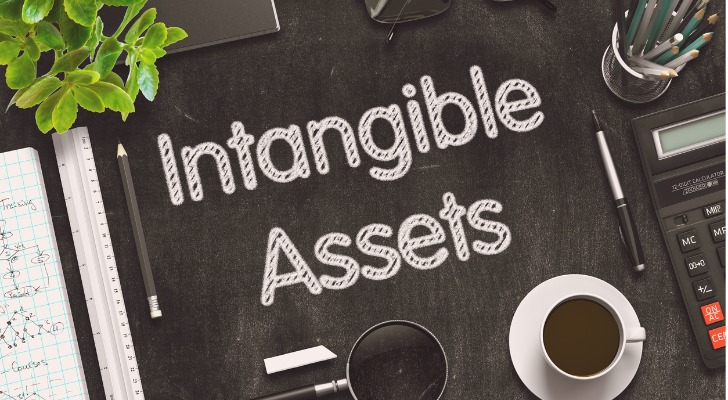Unlike physical assets such as machinery or real estate, intangible assets lack a physical presence. They include things like brand recognition, customer loyalty, patents, copyrights and business methodologies. These assets often stem from innovation, creativity or a company’s strategic initiatives which make them unique and hard to replicate. Ignoring these assets can result in a considerable underestimation of a company’s real value. Working with a financial advisor can give you a good idea of how the assets at your company or the ones you personally own could be valued.
Understanding Intangible Assets
Intangible assets are non-physical assets producing economic value for a company. Recognized by their lack of physical existence, long-term usefulness and the significant challenge involved in accurate valuation, their bearing on a company’s value, while not guaranteed, can hold considerable weight.
Take Google’s search algorithm, for instance. This intangible asset is considered to contribute considerably to the company’s business value. This proprietary technology allows Google to deliver more relevant search results than its competitors, in turn attracting more users and driving more ad revenue.
The recognition and understanding of intangible assets hold significant importance. Take business acquisitions, for example. More often than not, the acquiring company will pay above the book value, which is a company’s total assets minus its total liabilities, of the company being bought. This premium is tied to the value of intangible assets like a robust reputation, a loyal customer base or proprietary technology.
Types of Intangible Assets

There are numerous types of intangible assets from intellectual property to goodwill. Understanding each type is crucial for accurately assessing a company’s value. Here are some of the most common and popular types of intangible assets.
Intellectual Property
Intellectual property refers to a category of intangible assets encompassing copyrights, patents, trademarks and trade secrets. These assets reflect a company’s legal rights over unique creations or inventions. For instance, Apple’s numerous technology patents prevent competitors from copying their innovative products, thereby contributing to Apple’s market dominance and overall business value.
Brand Value
Brand value is the surplus worth a company recognizes from its brand name beyond the physical value of the goods or services it trades. Brands like Coca-Cola and Nike, for instance, prove valuable due to their market recognition and the trust they command among consumers. Coca-Cola’s brand value, in particular, is considered to contribute towards its high market capitalization, allowing it to impose premium prices and enjoy customer loyalty.
Goodwill
Goodwill is an intangible asset that comprises elements like customer loyalty, brand reputation and employee morale. It signifies the value of a company’s positive standing and relationships with stakeholders. Consider Amazon, for instance. Its sustained high customer satisfaction and strong reputation are maintained through effective customer service strategies, a commitment to fast and reliable delivery and a consistent focus on enhancing user experience. These elements contribute to goodwill, boosting Amazon’s business value.
How to Value Intangible Assets
The process of valuing intangible assets is complex due to their unique nature and absence of physical existence. However, there are multiple approaches to do so. Here are the three main ways:
- Market approach: The market approach evaluates the asset by comparing it to similar assets traded on the open market.
- Cost approach: The cost approach values an intangible asset based on the expense necessary to replace it.
- Income approach: The income approach estimates the value of an intangible asset according to the income it is anticipated to yield in the future. In each instance, a financial advisor’s expertise can be invaluable in accurately estimating the worth of intangible assets.
How Intangible Assets Are Recorded on a Company’s Balance Sheet
Intangible assets are categorized as non-current assets on a balance sheet, with their value typically spread, or “amortized,” over their “useful life.” The “useful life” term refers to the estimated period over which the asset is expected to contribute to the company’s cash flows. “Amortizing” represents the process of gradually reducing the value of an asset over time.
These assets, for example, goodwill, can substantially increase a company’s book value reflected on the balance sheet. They can also influence other financial statement items, such as revenues and expenses, through income generation or incurred amortization expenses.
Bottom Line

Understanding and valuing intangible assets are crucial for an accurate assessment of a company’s worth. For business owners, grasping their company’s intangible assets can form strategic decisions and help maximize value. For investors, it can enhance financial decision-making. An investor might consider the strengths of a company’s intellectual property rights when investing, as this could indicate the potential for a competitive edge and the possibility of higher returns.
Tips for Asset Management
- If you’re looking to value your assets, or make a new financial plan, consider working with a financial advisor. Finding a financial advisor doesn’t have to be hard. SmartAsset’s free tool matches you with up to three vetted financial advisors who serve your area, and you can have a free introductory call with your advisor matches to decide which one you feel is right for you. If you’re ready to find an advisor who can help you achieve your financial goals, get started now.
- Consider using a tool to help you calculate your net worth with all of your assets including if you’re thinking about retirement or investing.
Photo credit: ©iStock.com/Tashatuvango, ©iStock.com/svetikd, ©iStock.com/PonyWang
